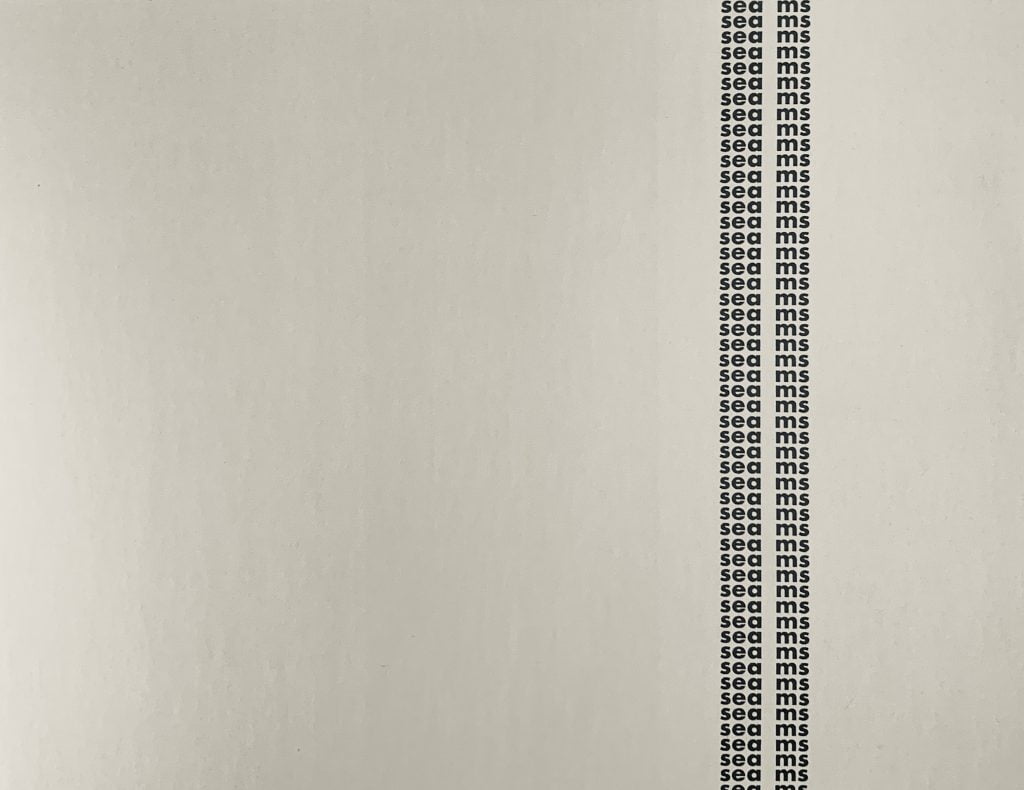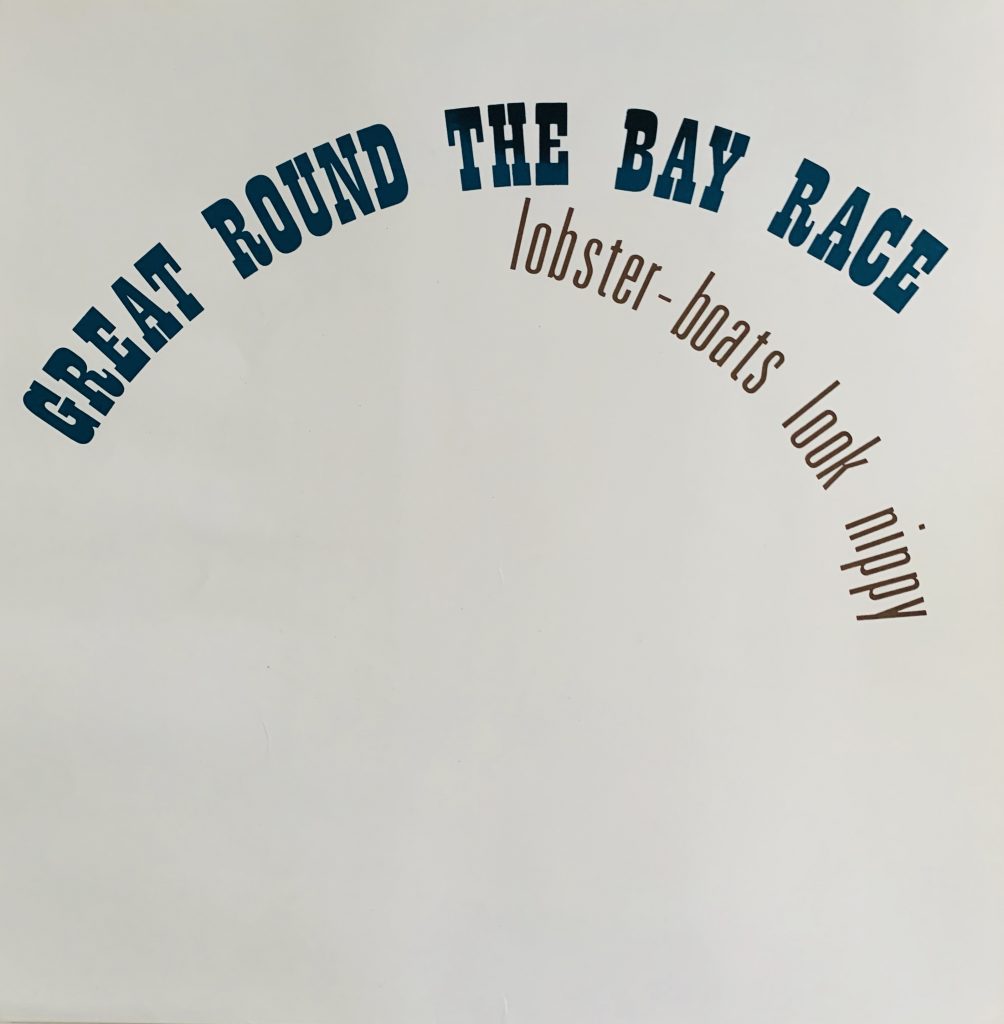MARINE. 1968. COLLABORATION WITH PATRICK CAULFIELD.
Dunsyre: Wild Hawthorn Press, 1968
45.9 × 52cm, yellow and black on white silkscreen. A collaboration with the well known British pop artist Caulfield in the latter's bold, thick out-llined style. Four lemons are in a bowl, and the word MARINE is next to the bowl seemingly on a piece of wood or card (possibly a fisherman's slip used to identify who owned what fish boxes when the catch went to market).
In a number of different works, Finlay often compares lemons to boats - so this is on one level a scene of a harbour: the lemons are made even more obviously to represent boats as they each has port registration numbers on them.,
The edition size is not known. All copies of the print are unsigned (which was Finlay's preference but a little unusual for the pop artist). There are some scuffs on the black of this silkscreen but else VG. This is a very rare print - partly for the later popularity of Caulfield.
JOINT:
15 x 21cm, 1pp. Printed compliments slip "Marine: Ian Hamilton Finlay:drawn by Patrick Caulfield" and with added hand written note: "Love from Ian, 4 January 1969". Perhaps might be regarded in lieu of a signature.
BR>
MEDIUM Screenprint on paper
DIMENSIONS Image:












